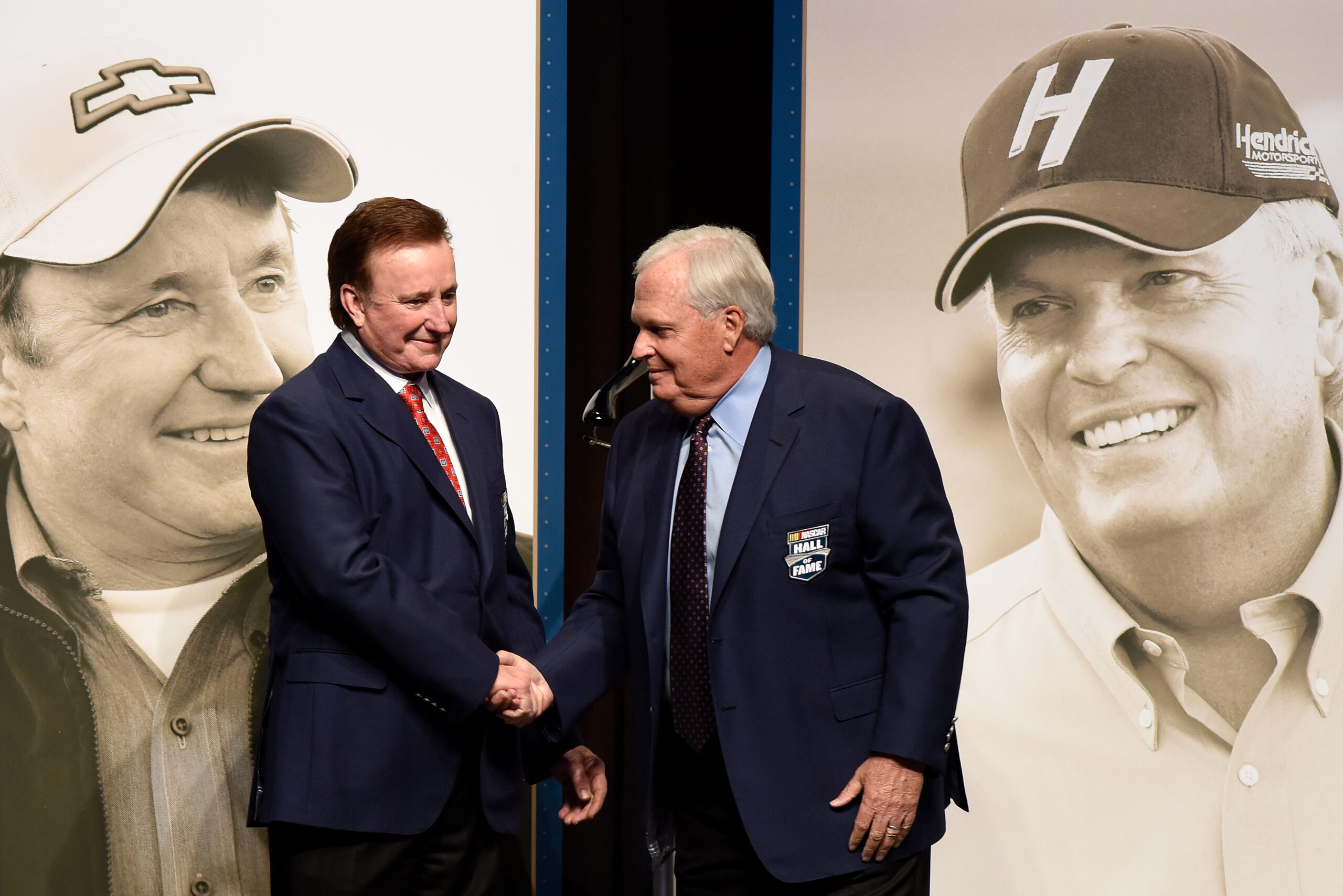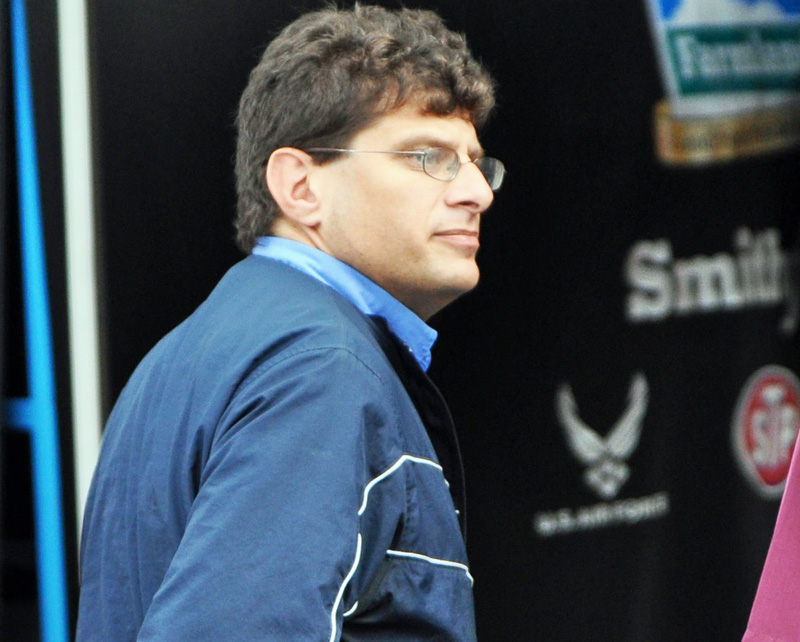NASCAR Honors its Beginnings with Induction of Raymond Parks into Hall of Fame
You may think you know how NASCAR began but if you’re not familiar with Raymond Parks, you only know half the story.
NASCAR took a huge step forward in correcting that misconception by inducting Parks into the NASCAR Hall of Fame Friday evening.
Parks’ granddaughter, Patricia DePottey, spoke about his career and his decision to leave NASCAR after only four seasons as a team owner.
“Throughout their lifetime, he always wanted to make sure his family was taken care of and that he was there for them,” she said.
“He always carried NASCAR with him,” she continued. “He did tell me one time, we were in a car and we were talking about racing, and I asked him why he left, and his exact words were, ‘Well, it was expensive,’ and he said, ‘I had a family to take care of.’”
“He physically left, but if you went into his office in the store, he had everything he loved right there,” said DePottey. “He had his trophies. He had his pictures. He had his family surrounding him in the stores. And he had his business.”
Before his passing in June 2010, Parks was the last living member of the group that gathered in 1947 at the Streamline Hotel in Daytona Beach, Florida to form NASCAR.
While most of the credit for forming NASCAR goes to William “Big Bill” France, it may not have happened at all if not for Raymond Parks and others like him who shared a dream.
“At the time, I didn’t know what I was getting into,” Parks once said. “I might have had a vision, but I certainly never saw where NASCAR was going. It surpassed anything I imagined. I’m just glad to have been in it at the beginning.”
Parks was born in Dawsonville, Georgia in 1914 and was the oldest of his father’s 16 children. He left home and moved to Atlanta at the young age of 14 and got into the business of hauling moonshine. Within a couple of years, the teenager owned a service station and ran a network of moonshine distributors.
Red Vogt owned a garage just down the road from Park’s service station and soon became the mechanic of choice for the bootleggers. More importantly, this was the beginning of a partnership that would make NASCAR history.
If you really want to know what racing was like before there were corporate sponsors and television cameras, just listen to Raymond Parks.
“Racing was a lot different back then,” said Parks. “It was really just getting started. I guess Lakewood (near Atlanta) was the first real track that we raced on. There were dozens of other tracks that would spring up in pastures or on farms, with just some fence wire separating the fans from the racing.”
“Sunday afternoon was a time that most people relaxed. It was normal for those who had fast Fords or other types of moonshine cars to want to get together. They might decide to go out on a highway outside of town and see who had the fastest car.”
“Other times, they would find some farmer that would let them go out in his pasture. Maybe it was one or two cars, but usually, it was several. And when the cars revved up, the local people would always be there.”
His entry into racing as a professional team owner came about at the urging of two cousins.
His cousins, “Lightning” Lloyd Seay and “Rapid” Roy Hall were also in the moonshine business and convinced Parks to finance them in their racing careers. Parks provided them with quality cars with Red Vogt as his chief mechanic.
Hall and Seay attained celebrity status and became two of the first stars on the amateur racing circuit. Roy Hall was the subject of the Jim Croce song “Rapid Roy, that Stock Car Boy.” Seay, who was killed in a moonshine dispute in 1941, was a frequent thorn in the side of Georgia lawmen.
One deputy described Seay as “without a doubt the best automobile driver of this time. He was absolutely fearless and an excellent driver on those dusty, dirt roads. I caught him eight times and had to shoot his tires off every time.”
Another deputy remembers a night when he stopped Seay for speeding as he headed north for another load of moonshine. Seay handed the deputy two $10 bills. The officer told him, “You know the fine is only $10.” Seay responded by saying, “I’m paying for my return trip later tonight.”
By the early 1940s, Parks was making a little money with his amateur racers. One of those racers was the future founder of NASCAR, Bill France.
Just when racing was getting off the ground, World War II broke out. Parks was off to Germany and spent about three years in the service. He participated in the famous Battle of the Bulge where he spent over 100 days in a foxhole.
Parks survived the war with barely a scratch and soon returned to racing with a new driver, Red Bryon.
Byron had also been in World War II but was not so lucky. His bomber had been shot down and Byron nearly lost a leg. As a result of the injury, he had to wear a leg brace and an orthopedic boot so driving a car wasn’t easy.
But with some modifications to the clutch pedal by Red Vogt and a lot of determination, Byron was able to race competitively.
In December of 1947, France invited all the most successful names in racing to that famous meeting at Daytona Beach where NASCAR was formed. Raymond Parks, Red Vogt and Red Byron were among the participants.
That meeting was just the first step. Parks continued to play a dominant role by contributing money, cars and advice to France and the fledgling organization.
The team of Parks, Vogt and Bryon went on to win the first two NASCAR championships ever awarded; the Modified Class in 1948 and the Strictly Stock Grand National Championship in 1949.
Parks and Vogt continued to find success and later fielded cars for Fonty Flock and Curtis Turner. However, Park’s career as a car owner was short-lived. In the mid-1950s, Parks walked away from NASCAR.
“It was money, that’s what it was,” Parks said when asked why he had left the sport. “I loved racing, but I had to make a living. My business was doing well, but I was splitting the purses with the drivers and paying all the expenses, including parts, and my money was coming up shorter each week.”
After Parks left NASCAR, he focused on his other business interests including real estate, service stations, convenience stores and vending machines.
Parks may have left NASCAR but he never forgot it. He watched it grow from a weekend pastime to the well-oiled machine that it is today.
Parks once said, “If there’s one thing I regret, it’s the way NASCAR has tried to distance itself from those early drivers. Some of them were as rough as the liquor they hauled, but I always respected them.”
Shortly before his passing, he contributed memorabilia to the NASCAR Hall of Fame where his accomplishments are immortalized. Although his time in NASCAR was brief, he was instrumental in legitimatizing the sport.
Dale Earnhardt Sr. once called Parks “the sport’s unsung hero.”
In 2009, NASCAR historian Buz McKim called Park’s team, “the Hendrick Motorsports of its day.”
“He always had the best of equipment, McKim continued, “the best drivers and the best mechanics. He always made sure the cars were totally spotless when they came to the track. That’s just the way he did things.”
NASCAR chairman Brian France acknowledged the contributions of Raymond Parks after his passing.
“Raymond was instrumental in the creation of NASCAR as a participant in the historic meeting at the Streamline Hotel in Daytona Beach,” said France. “Raymond is a giant in the history of NASCAR and will always be remembered for his dedication to NASCAR.”
Richard Petty summed up Parks’ contributions best, saying, “He set the standard. Mr. Parks brought the sport class. A lot of people looked at that and said, ‘If he can do it, we can do it. We can clean the sport up. We can clean ourselves up.’
“It took people like Mr. Parks to lay the foundation that we’re still living off of. And without people like him, we wouldn’t have the history we have and we wouldn’t be where we are today.”
Follow @angiecampbell_ on Twitter for the latest NASCAR news and feature stories.







